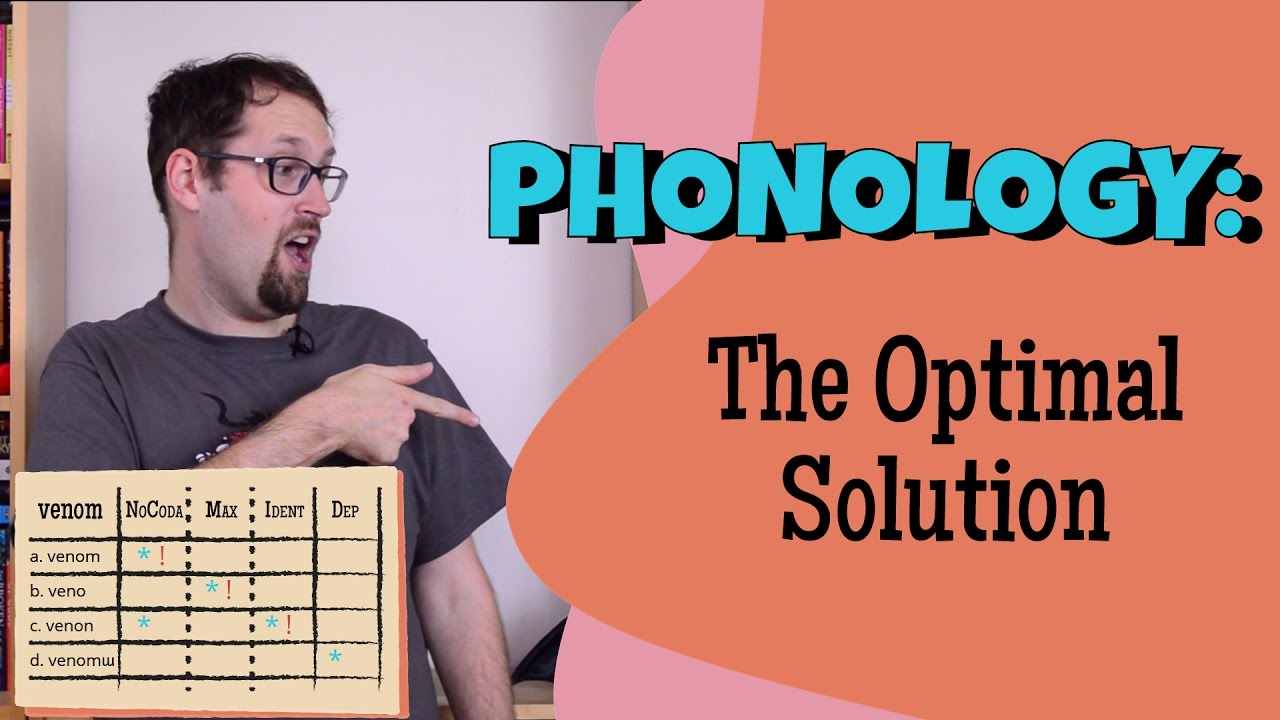The Ling Space
How can we try to capture the commonalities and differences between linguistic sound systems? What makes one language sound different from another? In this week’s episode, we take a look at Optimality Theory: how we can use constraints to describe how phonology behaves, how we rank which rules we care most about breaking, and how changing our priorities leads to totally different sound outcomes.
This is Topic #82!
This week’s tag language: Hidatsa!
Related videos:
Rhymes and Reasons: The Shapes of Syllables – https://youtu.be/YON1pOcEhrA
Last episode:
Words from Another World: The Linguistics of Alien Languages – https://youtu.be/QVqDpY-11UM
Other of our phonology and phonetics videos:
The Melody of Feet: Stress Patterns in Phonology – https://youtu.be/MdId9wnMNg8
Phonation States: How We Vibrate to Make Sounds – https://youtu.be/edYLoMRgaFw
Nosing Around Phonetics: The Acoustics of Sonorants – https://youtu.be/g8BgfHEDbFY
Our website also has extra content about this week’s topic, discussing how kids learn how to rank their constraints, at: http://www.thelingspace.com/episode-82/
(This link should be operating by Thursday evening.)
Find us on all the social media worlds:
Tumblr: http://thelingspace.tumblr.com/
Twitter: http://twitter.com/TheLingSpace
Facebook: http://www.facebook.com/thelingspace/
And at our website, http://www.thelingspace.com/ !
You can also find our store at the website, https://thelingspace.storenvy.com/
We also have forums to discuss this episode, and linguistics more generally.
Sources:
Most of this week’s episode is based on information from Carlos Gussenhoven and Haike Jacobs’s book, Understanding Phonology.
There’s a great archive of papers (albeit scholarly) on Optimality Theory at the Rutgers Optimality Archive: http://roa.rutgers.edu/
Angus Grieve-Smith also has a good short introduction to OT here: https://www.scribd.com/document/25583046/A-Basic-Introduction-to-Optimality-Theory
The World Atlas of Linguistic Structures Online is a great resource for learning more about linguistic typology! Our specific source on syllable structure is http://wals.info/chapter/12 , but it’s a good place to poke around and learn things.
Looking forward to next time! .
